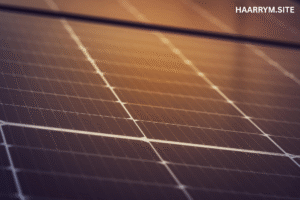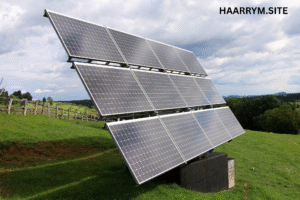Without increasing your power cost, solar lights are a great way to liven up your patio, walk-through, or yard. Like any outdoor tool, they do, however, sometimes break down. Calm down if your solar lights are not turning on. Most problems are common and easily corrected with some do-it-yourself troubleshooting.
This article will lead you through the main causes your solar lights might not be functioning and show you how to gradually solve them. We handle everything from a broken solar panel to a battery issue to anything else.
Typical Reasons Solar Lights Fail
Let’s begin with the foundations. The most often occurring causes of solar light failure are:
1. Absence of Sunlight
Solar lights charge by sunshine. They won’t have enough power to illuminate at night if they are not receiving enough direct sunlight during the day.
Fix:
-
Move your lights toward a sunny location.
-
Make sure no buildings, plants, or trees shadow them.
2. Filthy Sun Panels
Sunlight cannot access the solar panel from dust, filth, and trash, therefore drastically lowering its efficiency.
Fixed:
-
Once a month, give the panels a clean-up with a moist cloth and mild soap.
-
Steer clear of strong cleansers that could haze or scratch surfaces.
3. Faulty or Dead Batteries
Rechargeable either AA or AAA batteries are used in most solar lamps. Over time, these batteries deteriorate and finally lose their capacity to maintain charge.
Fix:
-
Matching the voltage of 1.2V, replace old batteries with fresh rechargeable NiMH or NiCd batteries.
-
Steer clear of using standard alkaline batteries; they won’t recharge and may leak.
4. Obstructed Sensors for Light
Many times, solar lights have a built-in photoresistor designed to sense darkness. Should it be obstructed or dusty, the light won’t turn on even in darkness.
Solve:
-
With a fresh cloth, gently clean the sensor area.
-
Make sure it’s not left in ambient light at night—that of streetlamps.
5. Turn Left Off
Though many solar lights come with an ON/OFF switch, it seems obvious. Should it be turned off, the light won’t come on independent of battery level.
Fix:
-
Look at the side or bottom of the lamp for a little switch.
-
Make sure it reads “ON.”
6. LED Bulb Malfunction
Though uncommon, sometimes the LED itself may burn out or become damaged.
Correct:
-
If at all feasible test the light with a known functioning LED.
-
If the light is beyond repair, replace the LED or the whole lamp.
7. Damage from Water
Although most solar lights are water-resistant, lengthy exposure to heavy rain or snow may harm them.
Corrections:
-
Opening the light casing, look for dampness or corrosion.
-
Thoroughly dry then replace any rusted components.
-
For even more protection, think about using waterproof sealer.
Comprehensive Troubleshooting for Solar Lights Not Working
Diagnose and repair your lights using this checklist:
First Step: Check the Solar Panel
-
Is it clear and unencumbered?
-
Does it get daily at least six to eight hours of direct sunlight?
Second Step: Examine the Batteries
-
Release the battery compartment.
-
If required, replace with fresh rechargeable batteries.
-
Verify contacts for cleanliness free of corrosion.
Third Step: Check the ON/OFF Switch
-
On and off the switch.
-
Leave it in the ON state and set the light in a dark room.
-
Should it illuminate, the batteries and panel are running as intended.
✅ The Fourth Step is Reseting the Light
-
Check the manufacturer’s handbook; some solar lamps offer a reset function.
-
Leave the light off for 48 hours then turn it back on.
✅ The Fifth Step is Looking at Internal Components and Wiring
-
If you feel comfortable opening the case carefully.
-
Search for burned markings, corrosion, or unconnected wires.
-
Skip this stage and think about a replacement if you lack confidence in your electrical ability.
Tips for Preventive Maintenance for Long-Lasting Solar Lights ☀️
🧽 1. Routinely Wipe the Solar Panel
One should routinely wipe the solar panel every two to four weeks. For best brightness, keep the lens of the light spotless.
🔋 2. Replace Batteries Yearly
Once a year replacement of batteries guarantees best performance even if they are still running.
🛡️ 3. Waterproof the Parts
Around batteries and seam lines, use silicone sealant. If not rated for severe circumstances, store lights inside during bad weather.
🔧 4. Employ High-Quality Tools
Make investments in solar lighting from respectable manufacturers. Read reviews and look for IP ratings—that is, IP65 for water resistance.
When Would One Replace Rather Than Repair?
Sometimes even with your greatest efforts, a solar light just won’t work. These indicators point to the time for replacement:
-
Solar panel with cracks or fading
-
Rusty battery contacts
-
Flickering or zero light even with fresh batteries
-
Physical injury from impacts or falls
Quality solar lights will be more reasonably priced and efficient in 2025 than they have been previously. Should yours be more than two to three years old, a replacement might be the superior option.

Frequencies of Questions Regarding Unworking Solar Lights
Q1: Are ordinary AA batteries OK for solar lights?
A: Not. Solar lights call for rechargeable batteries. Regular batteries won’t recharge and may harm the gadget.
Q2: Why only do my solar lights run for few hours?
A: Usually from old batteries or little sunshine, a low battery charge results. Experiment moving the light and changing the batteries.
Q3: Are solar lights winter-friendly?
A: Indeed, however shorter days and cloudier sky might cause performance to suffer. Regular panel cleaning is important; furthermore, think about using more highly efficient LED lights.
Last Thoughts
Usually something small—dirty panels, dead batteries, or a neglected switch—your solar lights cease operating. Your solar lights will last longer and your outside area will remain brilliant with regular maintenance and fast repairs.
Still mired in uncertainty? Think about substituting newer versions with superior battery life, motion detection, and durability with older ones.
Keep your lights on and your landscape shining—one ray of sunshine at a time.
